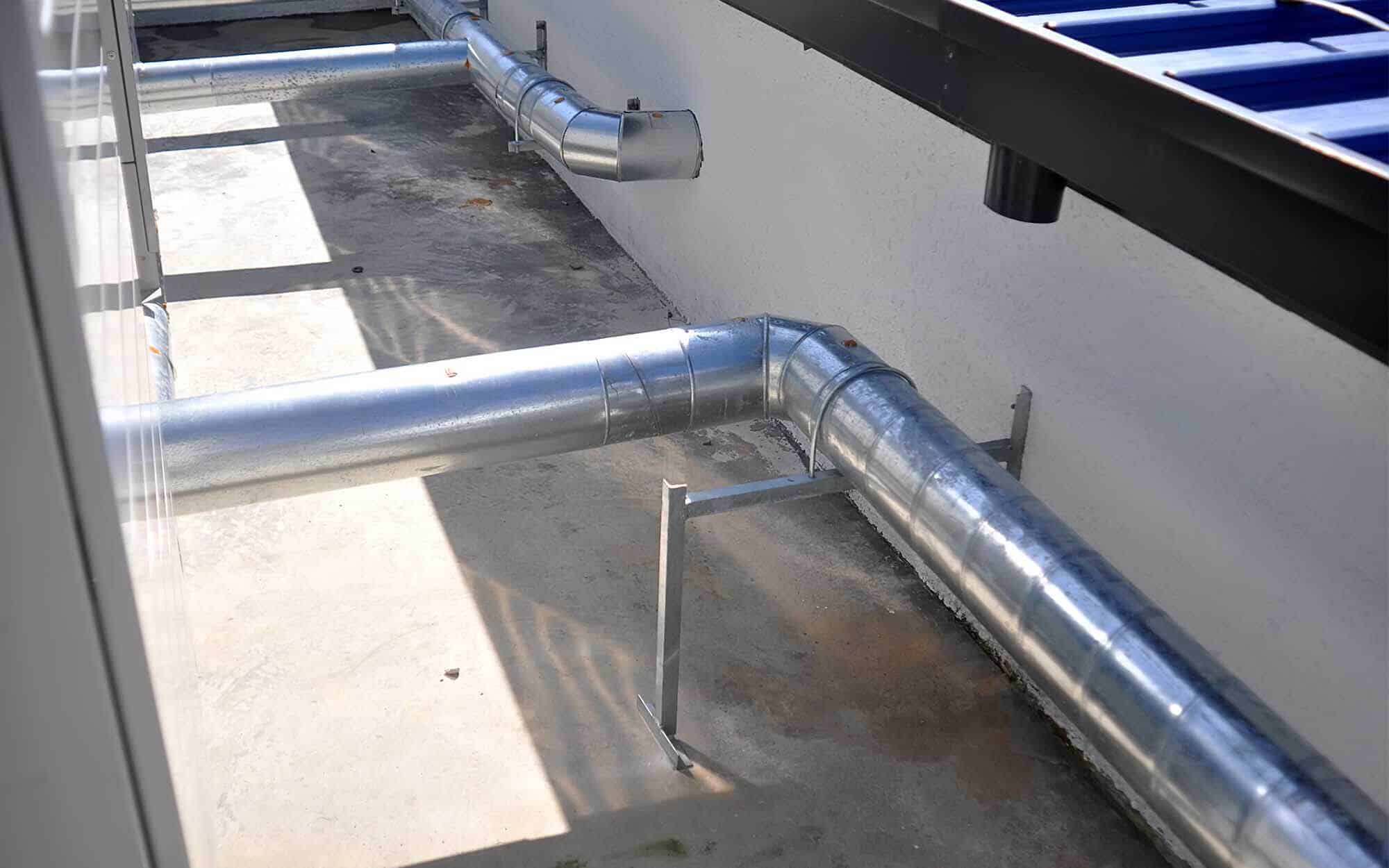
Variable refrigerant flow (VRF) systems are based on the idea that multiple smaller air handlers are more efficient at cooling a facility than a single, central air conditioning unit. Particularly when different rooms in a facility have different cooling needs, a VRF system offers precise control over air conditions.
What Are Variable Refrigerant Flow Systems?
A conventional central air conditioning system works by having an air conditioning unit cool air from the outside that is then distributed throughout a facility through a system of connected ducts. VRF units work independently to cool individual spaces.
However, that’s not all that makes a VRF system special. The real power and efficiency of a VRF system is its ability to control how much refrigerant is being used by the system, offering extremely precise control over internal temperatures.
When you turn down the temperature on a thermostat connected to a conventional system, it simply runs shorter or longer depending on the temperature selected. The same amount of refrigerant is being used. Essentially, conventional systems are either “on” or “off.”
Because VRF systems can control the amount of refrigerant that is used, they can more efficiently meet the demands of your thermostat or control system. By extension, everyone inside the building has a greater degree of control.
The Components of VRF HVAC
While a conventional central air conditioning system requires a centralized maintenance room with equipment like hefty pipes, distribution fans, and water pumps, among other components, a VRF system is simply made up of the VRF units themselves.
Compact and friendly for smaller spaces, VRF systems offer a large degree of flexibility. Because VRF systems do not require ductwork, you can avoid maintenance costs and wasted space.
The Advantages of VRF Air Conditioning
Energy-Efficiency – When you are only using precisely the amount of energy that you need to keep your space at its ideal temperature, you are inherently going to use less energy. When combined with control systems, an entire facility can be cooled appropriately, at different temperatures in each room, while using less energy. As a bonus, VRF systems actually capture heat as a part of the cooling process which can then be transferred to other areas of the facility that may need it.
Quiet Operation – With the compressor unit located outside of the facility and an absence of ductwork, loud fans, and other equipment inside, VRF systems operate with much less sound than conventional air conditioning systems.
Consistent Temperatures – Where a central air conditioning unit is always turning on and off with the varying temperatures inside a facility, a VRF system involves individual units that are responsible only for their respective zones. The system works because the condenser is able to precisely measure the temperature and humidity in each zone and then sends the exact amount of refrigerant to the air handler that it needs to maintain air conditions. Consistent temperatures aren’t just good for efficiency. They help promote a more productive work environment as well.
Greater Control – Because each air handler in a VRF system is independently responsible for controlling the temperature in each zone, control systems can be much smarter and far more effective. From a mobile device, each unit can then be controlled independently. The divided system also has the benefit of offering greater monitoring capability. No longer are you restricted to detecting conditions for the facility as a whole. Each specific zone can be monitored and controlled.
Reduced Downtime – Because VRF systems are operating so precisely and aren’t working any harder than they need to, they tend to have fewer issues that require repair. In fact, because the entire system has fewer components, it is likely that your long-term maintenance and repair expenses will be significantly lower.
Control, efficiency, and reduced expenses are all in the cards when you install a VRF system. React Industries has the skill to make it happen for your facility.
VRF Mechanical System Expertise
Every building in New York City is unique. On top of that, there are new regulations popping up from time to time that make managing your HVAC expensive and complicated.
React Industries has the expertise to work with modern, efficient systems like VRF HVAC and the experience to help you navigate the challenges of building ownership and management in NYC. Reach out today to get started.